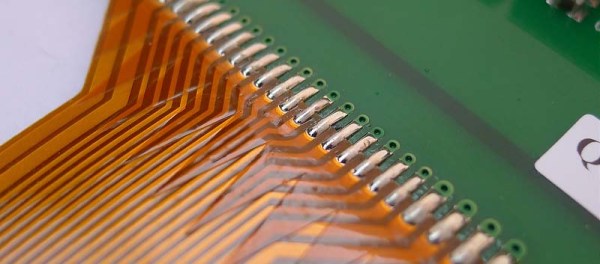You can find flex PCBs in just about every single piece of consumer electronics. These traces of copper laminated in sheets of Kapton are everywhere, and designing these cables, let alone manufacturing them, is a dark art for the garage electronics wizard. Having these flat flex cables and PCBs manufactured still requires some Google-fu or a contact at a fab house, but at least now designing these cables is a solved problem.
[Oli] needed a way to connect two PCBs together over a moving part. Usually this means some sort of connector or cable, but he’s developed an even better solution – flexible PCB connections. To generate these copper traces sandwiched between a few layers of Kapton, [Oli] wrote a Python script to take a set of parameters, and produces an design for Eagle that includes all the relevant bits.
Of course, with a flexible PCB layout, the question of how to get these manufactured comes up. we’ve seen a few creative people make flexible PCBs with a 3D printer and there’s been more than one Hackaday Prize project using these flex PCBs. [Oli] says any manufacturer of flexible circuits should be able to reproduce everything generated from his script without much thinking at all. All we need now is for OSH Park to invent purple Kapton.
You can grab [Oli]’s script on his GitHub.










